Abstract
Radioactive gibberellin A1 (3H-GA1) was injected into excised fruits of peas and Japanese morning glory. These were then grown in sterile culture to maturity and the label was followed in the seeds during further development and subsequent germination. During development of both pea and morning-glory seeds a large part of the radioactivity became associated with the aqueous fraction, while another part of the 3H-GA1 was converted into 2 new, acidic, biologically active compounds, designated X1 and X2. A relatively small part of the neutral compounds could be converted back to 3H-GA1, X1, and X2 by means of mild acid hydrolysis. During germination of pea and morning-glory seeds, part of the bound compounds was released in the form of 3H-GA1, X1 and X2 while, particularly during rapid seedling growth, a further conversion of 3H-GA1, mainly to X1, took place. In pea seedlings, growth during the first 2 to 3 days after imbibition was not affected by Amo-1618, an inhibitor of gibberellin biosynthesis. This, in conjunction with the findings on the interconversions between free and bound 3H-GA1 suggests that, at least in peas, early seedling growth may at least partly be regulated by gibberellins released from a bound form which was formed during seed development.
Full text
PDF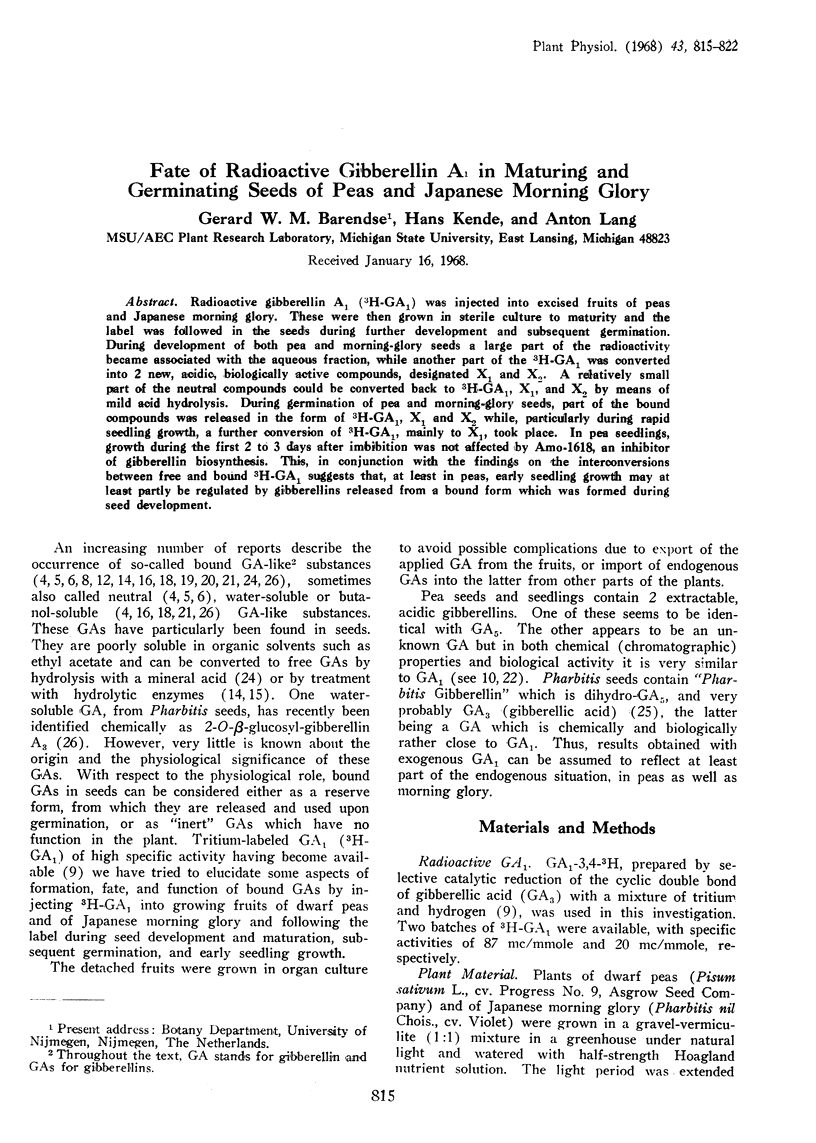
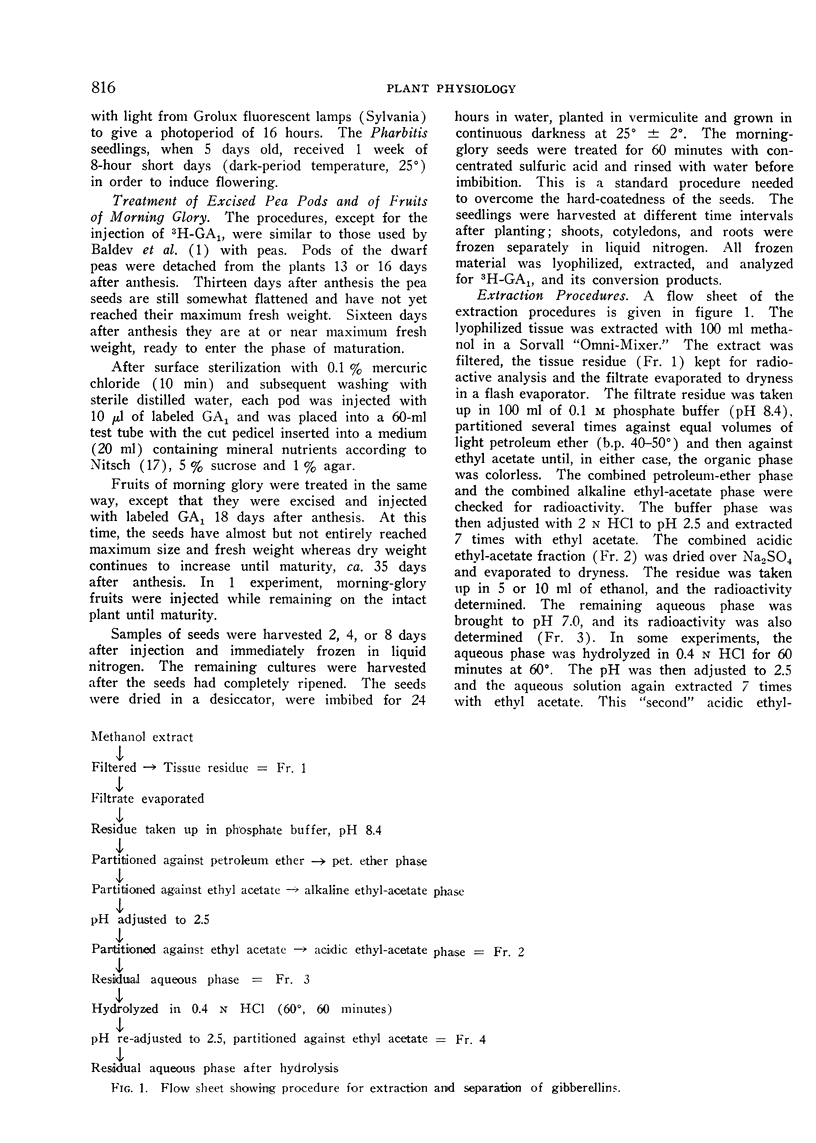
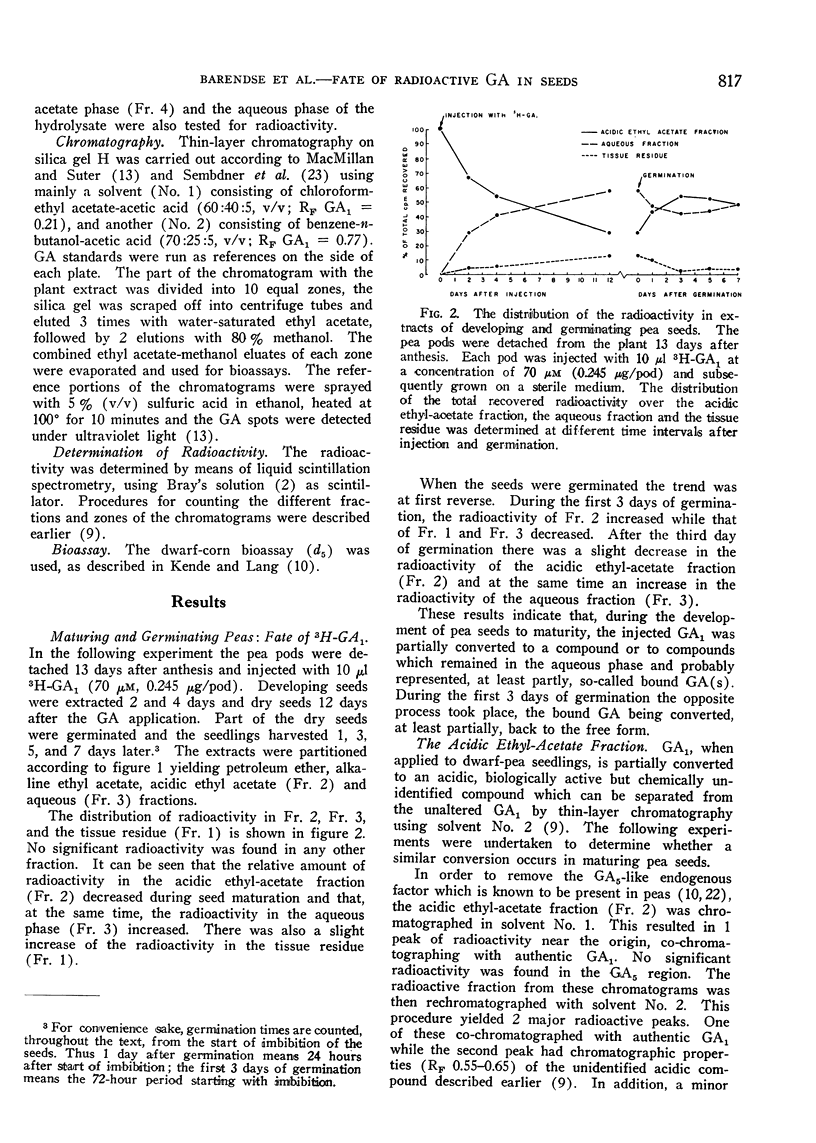
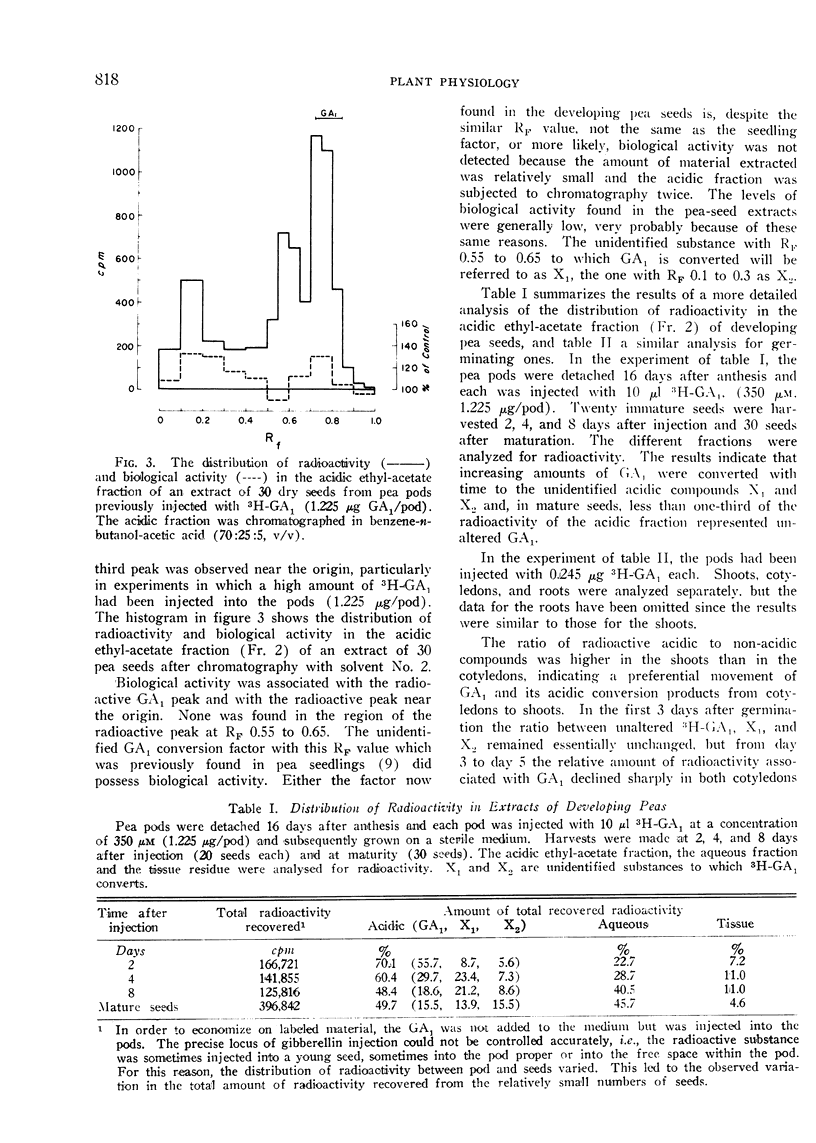
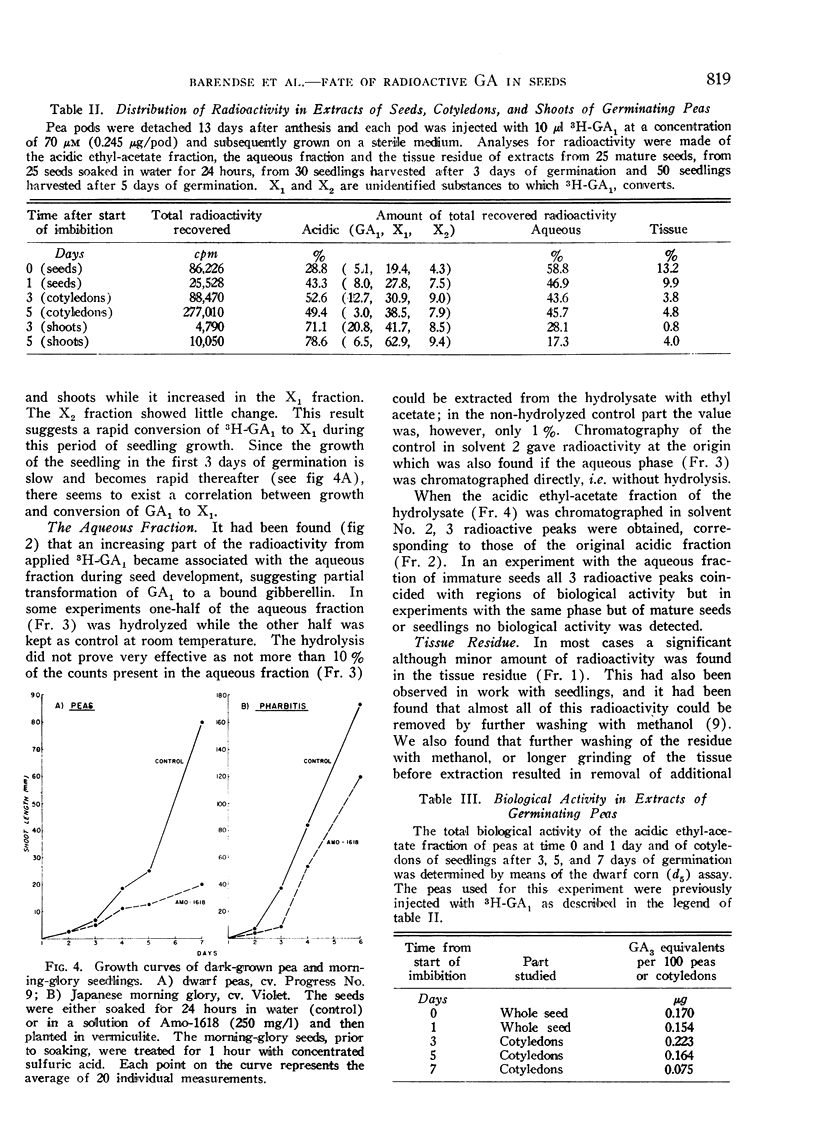
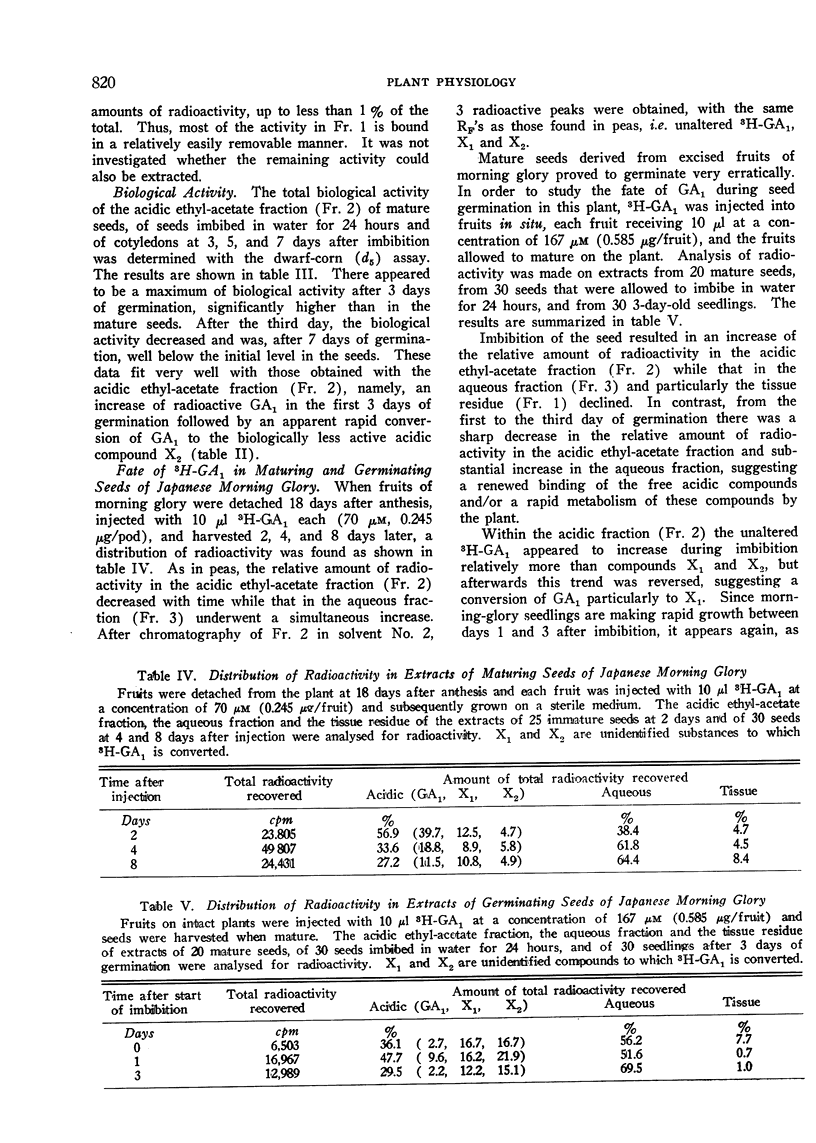
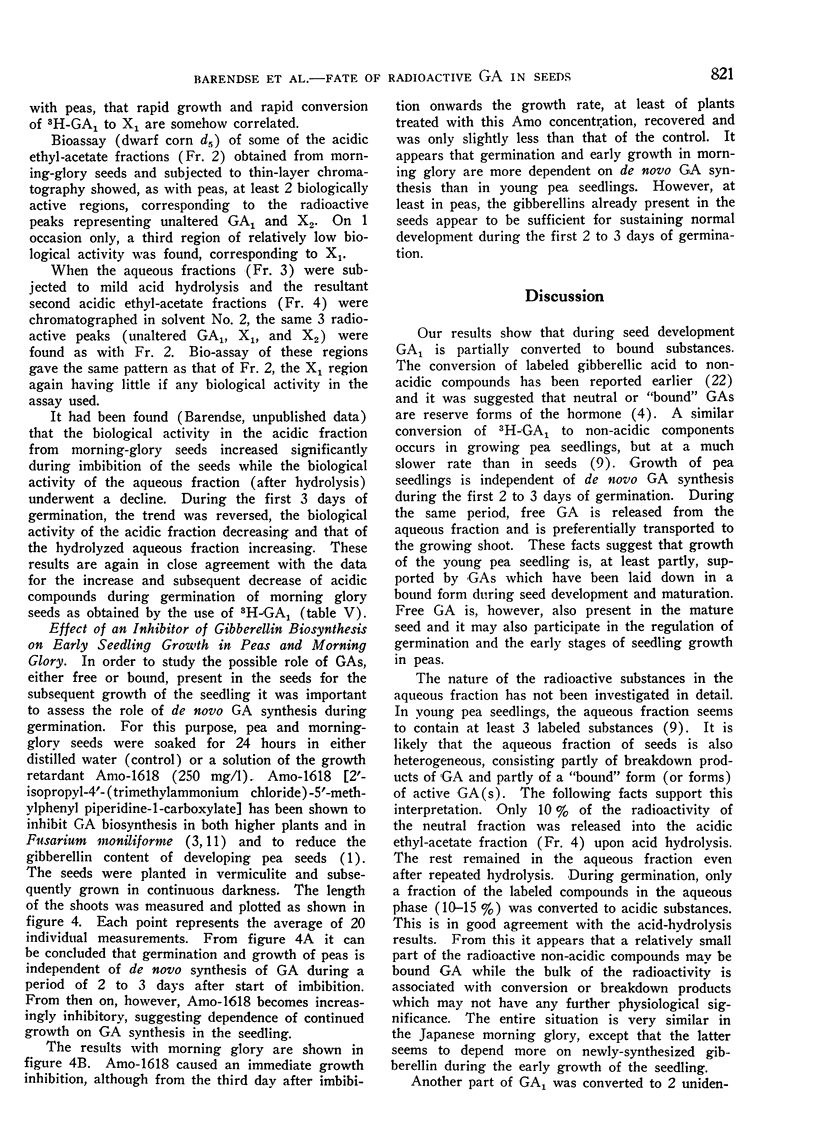
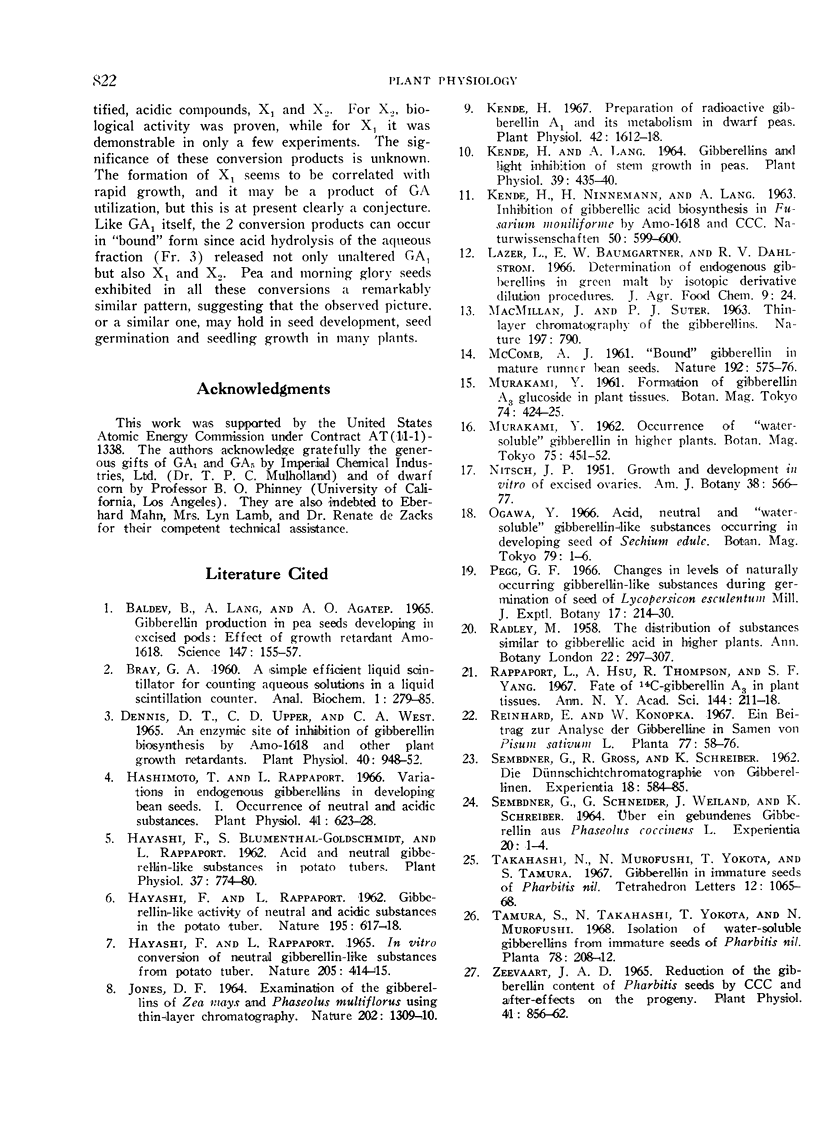
Selected References
These references are in PubMed. This may not be the complete list of references from this article.
- BALDEV B., LANG A., AGATEP A. O. GIBBERELLIN PRODUCTION IN PEA SEEDS DEVELOPING IN EXCISED PODS: EFFECT OF GROWTH RETARDANT AMO-1618. Science. 1965 Jan 8;147(3654):155–157. doi: 10.1126/science.147.3654.155. [DOI] [PubMed] [Google Scholar]
- Dennis D. T., Upper C. D., West C. A. An enzymic site of inhibition of gibberellin biosynthesis by Amo 1618 and other plant growth retardants. Plant Physiol. 1965 Sep;40(5):948–952. doi: 10.1104/pp.40.5.948. [DOI] [PMC free article] [PubMed] [Google Scholar]
- Hayashi F., Blumenthal-Goldschmidt S., Rappaport L. Acid & neutral gibberellin-like substances in potato tubers. Plant Physiol. 1962 Nov;37(6):774–780. doi: 10.1104/pp.37.6.774. [DOI] [PMC free article] [PubMed] [Google Scholar]
- JONES D. F. EXAMINATION OF THE GIBBERELLINS OF ZEA MAYS AND PHASEOLUS MULTIFLORUS USING THIN-LAYER CHROMATOGRAPHY. Nature. 1964 Jun 27;202:1309–1310. doi: 10.1038/2021309a0. [DOI] [PubMed] [Google Scholar]
- Kende H., Lang A. Gibberellins and Light Inhibition of Stem Growth in Peas. Plant Physiol. 1964 May;39(3):435–440. doi: 10.1104/pp.39.3.435. [DOI] [PMC free article] [PubMed] [Google Scholar]
- Kende H. Preparation of radioactive gibberellin a(1) and its metabolism in dwarf peas. Plant Physiol. 1967 Nov;42(11):1612–1618. doi: 10.1104/pp.42.11.1612. [DOI] [PMC free article] [PubMed] [Google Scholar]
- SEMBDNER G., GROSS R., SCHREIBER K. [Thin layer chromatography of gibberellins]. Experientia. 1962 Dec 15;18:584–585. doi: 10.1007/BF02172196. [DOI] [PubMed] [Google Scholar]
- Zeevaart J. A. Reduction of the Gibberellin Content of Pharbitis Seeds by CCC and After-Effects in the Progeny. Plant Physiol. 1966 May;41(5):856–862. doi: 10.1104/pp.41.5.856. [DOI] [PMC free article] [PubMed] [Google Scholar]


